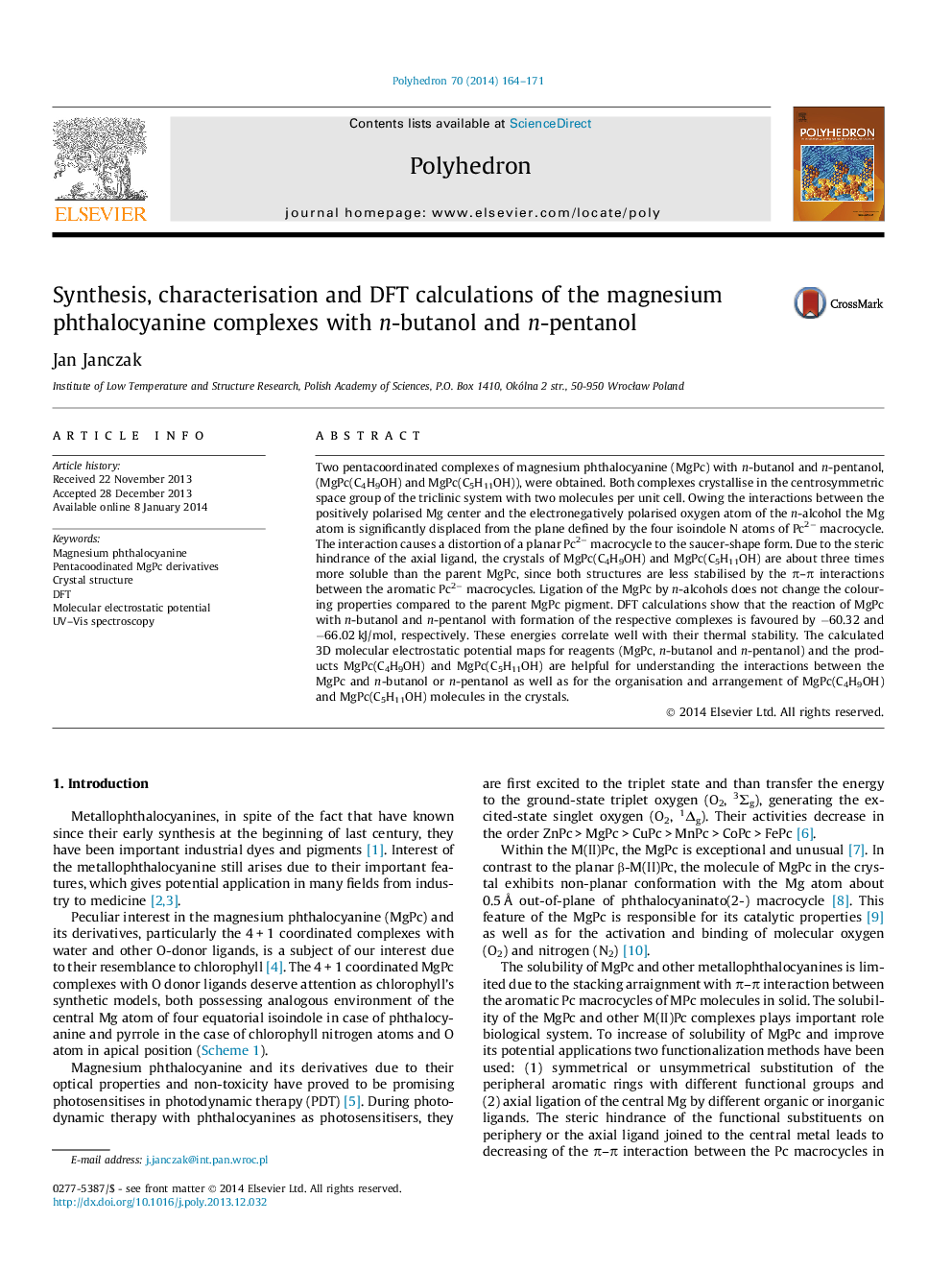| Article ID | Journal | Published Year | Pages | File Type |
|---|---|---|---|---|
| 1336509 | Polyhedron | 2014 | 8 Pages |
Two pentacoordinated complexes of magnesium phthalocyanine (MgPc) with n-butanol and n-pentanol, (MgPc(C4H9OH) and MgPc(C5H11OH)), were obtained. Both complexes crystallise in the centrosymmetric space group of the triclinic system with two molecules per unit cell. Owing the interactions between the positively polarised Mg center and the electronegatively polarised oxygen atom of the n-alcohol the Mg atom is significantly displaced from the plane defined by the four isoindole N atoms of Pc2− macrocycle. The interaction causes a distortion of a planar Pc2− macrocycle to the saucer-shape form. Due to the steric hindrance of the axial ligand, the crystals of MgPc(C4H9OH) and MgPc(C5H11OH) are about three times more soluble than the parent MgPc, since both structures are less stabilised by the π–π interactions between the aromatic Pc2− macrocycles. Ligation of the MgPc by n-alcohols does not change the colouring properties compared to the parent MgPc pigment. DFT calculations show that the reaction of MgPc with n-butanol and n-pentanol with formation of the respective complexes is favoured by −60.32 and −66.02 kJ/mol, respectively. These energies correlate well with their thermal stability. The calculated 3D molecular electrostatic potential maps for reagents (MgPc, n-butanol and n-pentanol) and the products MgPc(C4H9OH) and MgPc(C5H11OH) are helpful for understanding the interactions between the MgPc and n-butanol or n-pentanol as well as for the organisation and arrangement of MgPc(C4H9OH) and MgPc(C5H11OH) molecules in the crystals.
Graphical abstractTwo pentacoordinated complexes of magnesium phthalocyanine (MgPc) with n-butanol and n-pentanol, (MgPc(C4H9OH) and MgPc(C5H11OH)), in the crystalline form were obtained. Ligation of the MgPc by n-alcohols does not change the colouring properties compared to the parent MgPc pigment. Due to the steric hindrance of the axial ligand, the crystals of MgPc(C4H9OH) and MgPc(C5H11OH) are about three times more soluble than the parent MgPc.Figure optionsDownload full-size imageDownload as PowerPoint slide
